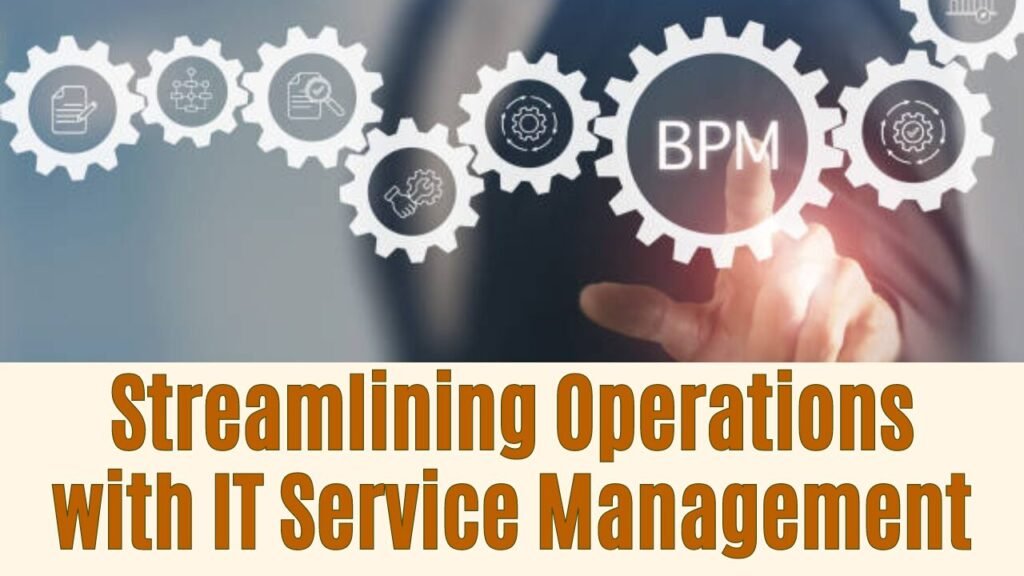In the fast-paced world of business, operational efficiency is key to maintaining a competitive edge. One of the most effective ways to achieve this is through IT Service Management (ITSM). ITSM is a strategic approach to designing, delivering, managing, and improving the way IT is used within an organization. By streamlining operations and aligning IT services with business needs, ITSM can transform your organization’s efficiency and effectiveness. Here’s how ITSM can help streamline operations and drive business success.
What is IT Service Management (ITSM)?
IT Service Management (ITSM) refers to a set of practices, processes, and tools designed to manage IT services throughout their lifecycle. ITSM is focused on delivering IT as a service, emphasizing customer needs and IT service delivery rather than purely technical issues.
Key Components of ITSM
- Service Strategy: Defining the strategy for IT services to align with business objectives.
- Service Design: Designing IT services, including architecture, processes, policies, and documentation.
- Service Transition: Managing changes in the IT environment, ensuring smooth transitions from development to operations.
- Service Operation: Managing the day-to-day operations of IT services, ensuring they are delivered effectively and efficiently.
- Continual Service Improvement: Continuously improving IT services and processes based on feedback and performance metrics.
Benefits of ITSM for Streamlining Operations
- Improved Efficiency and Productivity
ITSM provides a structured framework for managing IT services, leading to standardized processes and improved efficiency. By automating routine tasks and streamlining workflows, ITSM tools free up IT staff to focus on more strategic activities.
Key Tools:
- Service Desk Solutions: Tools like ServiceNow, Jira Service Management, and BMC Helix provide centralized platforms for managing IT requests, incidents, and problems, leading to quicker resolution times.
- Automation Tools: Automation platforms like Ansible, Puppet, and Chef help automate repetitive tasks, reducing manual effort and increasing productivity.
- Enhanced Service Quality
With ITSM, businesses can ensure that IT services are designed and delivered to meet specific business requirements. This results in higher service quality and reliability, minimizing downtime and improving user satisfaction.
Key Practices:
- Incident Management: Quickly identify and resolve incidents to minimize their impact on business operations.
- Problem Management: Identify root causes of recurring issues and implement permanent solutions to prevent future incidents.
- Cost Savings
By optimizing IT processes and resource utilization, ITSM helps reduce operational costs. Efficient incident management, proactive problem resolution, and streamlined workflows all contribute to cost savings.
Key Practices:
- Asset and Configuration Management: Track and manage IT assets and configurations to optimize resource utilization and reduce unnecessary expenditures.
- Capacity Management: Ensure IT resources are used efficiently to meet current and future business demands without over-provisioning.
- Better Alignment with Business Goals
ITSM ensures that IT services are aligned with business objectives, enabling IT to support and drive business goals effectively. This alignment leads to better decision-making and prioritization of IT initiatives that deliver real business value.
Key Practices:
- Service Level Management: Define and manage service level agreements (SLAs) to ensure IT services meet business expectations and requirements.
- IT Financial Management: Manage IT budgets and costs effectively to ensure that IT spending aligns with business priorities.
- Increased Agility and Flexibility
ITSM frameworks like ITIL (Information Technology Infrastructure Library) provide best practices for managing IT services in a way that is flexible and adaptable to changing business needs. This agility allows organizations to respond quickly to market changes and new opportunities.
Key Tools:
- Change Management: Manage changes to IT services and infrastructure in a controlled manner, minimizing risk and disruption.
- Agile and DevOps Integration: Integrate ITSM practices with Agile and DevOps methodologies to enhance collaboration, speed, and responsiveness.
Implementing ITSM in Your Organization
- Assess Your Current IT Environment
Conduct a thorough assessment of your current IT processes, tools, and capabilities. Identify gaps and areas for improvement, and understand the specific needs of your business.
- Define Clear Objectives
Set clear objectives for what you want to achieve with ITSM. These could include improving service quality, reducing costs, enhancing customer satisfaction, or increasing operational efficiency.
- Choose the Right ITSM Framework
Select an ITSM framework that aligns with your organization’s goals and requirements. ITIL is one of the most widely adopted frameworks, but others like COBIT, ISO/IEC 20000, and MOF (Microsoft Operations Framework) may also be suitable.
- Invest in the Right Tools
Implement ITSM tools that support your chosen framework and objectives. Look for solutions that offer comprehensive features, scalability, and integration capabilities with your existing systems.
- Train Your Team
Ensure that your IT staff are trained in ITSM best practices and the use of ITSM tools. Ongoing training and development are essential to maintain proficiency and adapt to new technologies and practices.
- Monitor and Measure Performance
Regularly monitor the performance of your IT services and processes using key performance indicators (KPIs) and metrics. Use this data to identify areas for improvement and drive continual service improvement.
Conclusion
IT Service Management (ITSM) is a powerful approach to streamlining operations and enhancing the efficiency and effectiveness of IT services. By implementing ITSM best practices and tools, organizations can improve service quality, reduce costs, align IT with business goals, and increase agility. Embrace ITSM to transform your IT operations and drive innovation and success in your business.


